Author Archives: Mus, Andy
Substation Safety and Awareness

MEAG Power, Participant & Public Power News
Winter 2024
Substation Safety and Awareness Training for Local Law Enforcement
MEAG Power-led substation training provides valuable insights for local law enforcement and fire departments, and counts towards POST credits for officers.
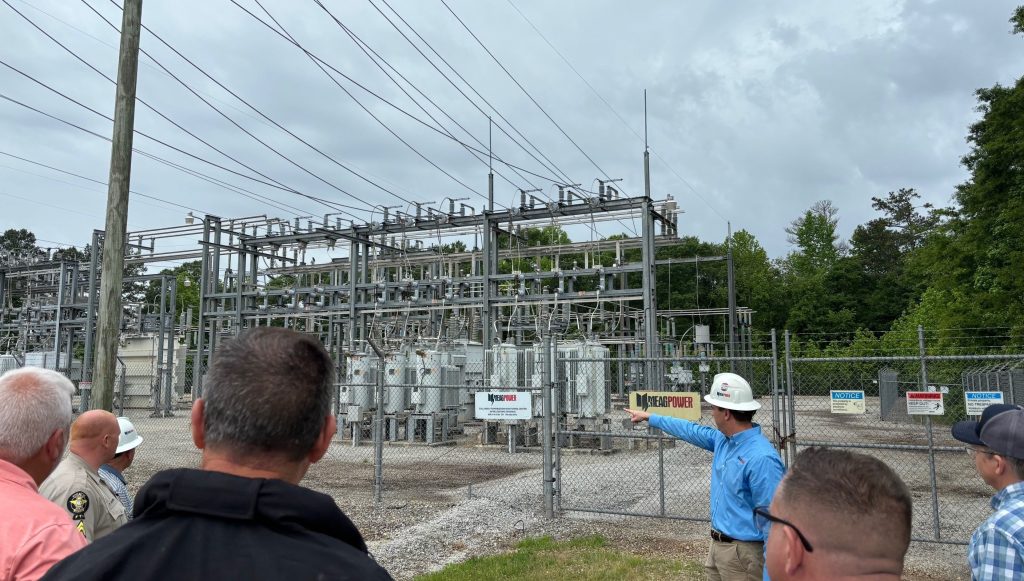
Did you know MEAG Power offers complimentary substation training for Participants’ local law enforcement and fire departments – including both a classroom presentation and site visit to a substation?
The training, which counts for 2-4 hours of POST (Peace Officer Standards and Training) credit for officers, provides insights into:
- Georgia’s Electrical Grid
- Substation Overview
- Substation Safety and Awareness
- Recent Events and Growing Threats
- Response and Communication Plans
- Review of Local Substations
The training is important as physical security incidents at electric utility facilities have been on the rise in recent years. From 2022 to 2023, there was a 68% rise in these occurrences according to the Electricity Information Sharing and Analysis Center (E-ISAC). In one example, stolen copper grounds led to an outage of 10,000 customers. In another, ballistic damage to transmission line conductors led to an outage of more than 15,000 customers and $60,000 in damages.
In fact, the increase in attacks on utility substations across the country led the Georgia Assembly to pass House Bill 227 in 2023. It calls for 1 to 10 years in prison for offenders who interfere with any property in a manner so as to endanger human life, and 2 to 20 years in prison for offenders who interfere with the proper operation of critical infrastructure with the intention of disrupting service with either force, violence or by electronic means.
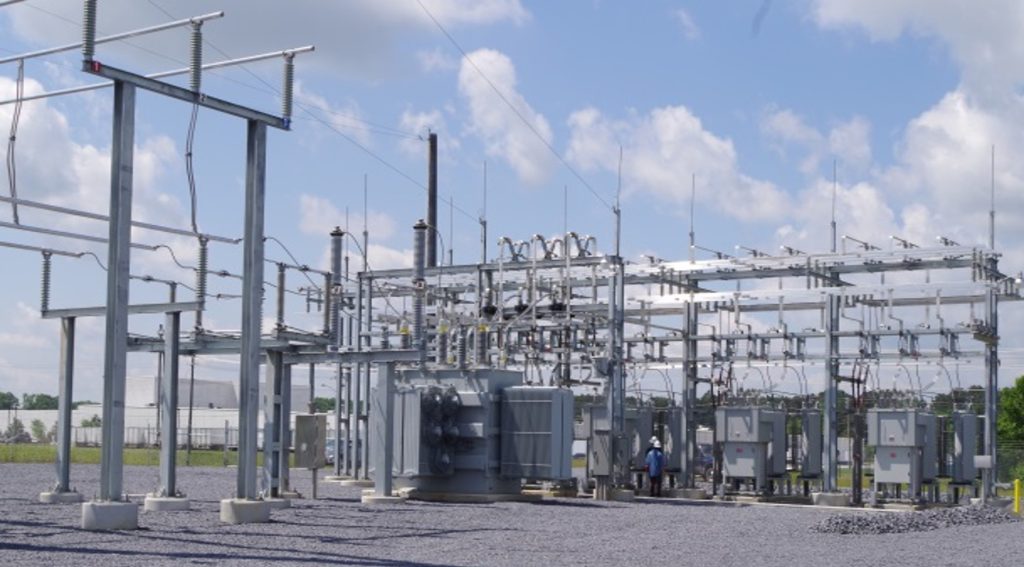
Attendees will learn about substation equipment like transformers, regulators, switches and capacitor banks. They also will learn how to gain access to a substation, what to do before entering any substation, how to safely navigate the substation grounds, and what to do in case of a security breach.
The substation visit is especially informative as law enforcement can locate hazardous substances including batteries, gases used in breakers and switches, and nitrogen tanks.
Those interested in the training for their community should reach out to their Regional Manager to schedule a session.
Quick Links:
Meetings & Events
Other Resources
Current is published by MEAG Power
1470 Riveredge Parkway, N.W., Atlanta, Georgia 30328 | www.meagpower.org | (800) 333-MEAG
Insights From The Mayors Summit

MEAG Power, Participant & Public Power News
Winter 2024
Insights From The 2024 Mayors Summit
The MEAG Power Mayors Summit provides a unique forum for city leaders to come together to share experiences, compare notes and discuss important issues impacting our Participant communities.
MEAG Power hosted its 30th Mayors Summit in November. This year’s event was especially notable as it came at a time when energy demand is predicted to rise more rapidly than it has in years. MEAG Power CEO Jim Fuller’s talk included the following graph from the Department of Energy that showed past and future demand growth.
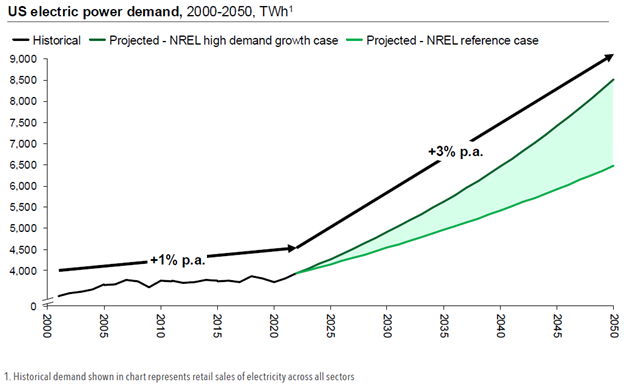
What’s at issue for Georgia and the rest of the U.S. is that summer peak demand is predicted to increase 10% between 2022-2032, while summer peak supply is only supposed to rise 4%, which includes currently planned capacity additions.
Much of the increase in energy demand will come from energy-intensive data centers, where Georgia has become a hotbed. In fact, the metro Atlanta region has the most data centers under construction of any comparable city in the U.S.
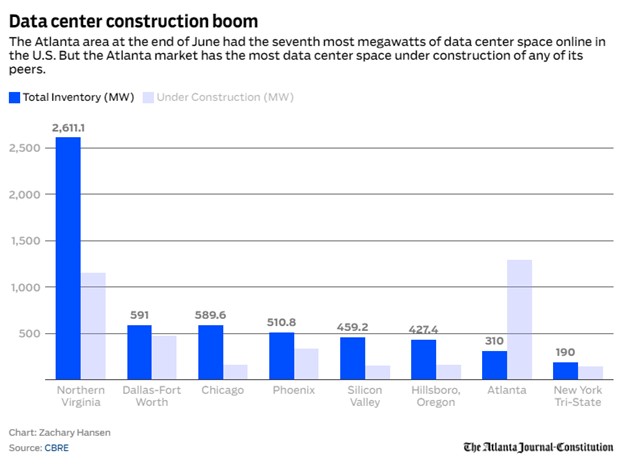
We’re seeing data center load requests come into our Participant communities as large as 50 MW up to 1 GW. Such sizeable loads can pose a significant risk for an individual city. However, cities that join together in a new generation project can take on these opportunities while spreading risk and rewards in a manageable fashion.
The growth in data centers is being fueled by AI, a topic presented by Alex Salkever, an author, AI expert and former BusinessWeek editor. He noted that Microsoft alone is on track to add a new data center every three days worldwide! While this poses obvious risks to grid reliability and the availability of power generation, the AI boom provides opportunities to improve city infrastructure through aspects such as remote inspections of power lines and drone-assisted first response to emergency situations.
Helping ensure grid reliability for many MEAG Power Participants is the availability of hydropower from Southeastern Power Administration (SEPA). Virgil Hobbs, SEPA Administrator and Chief Executive, walked the audience through who SEPA is and what they do to support their 472 wholesale customers, who in turn serve more than 12 million consumers.
Covering the early ramifications from the recent national election was Rob Talley, President of Talley & Associates, Inc., who has helped MEAG Power and its Participants through legislative lobbying for many years. On the economic front, Dr. Roger Tutterow, Professor of Economics at Kennesaw State University, gave an update on several important topics including inflation, risk of a recession, the housing and labor markets, and the potential for future rate cuts in the Federal Funds Rate.
Quick Links:
Meetings & Events
Other Resources
Current is published by MEAG Power
1470 Riveredge Parkway, N.W., Atlanta, Georgia 30328 | www.meagpower.org | (800) 333-MEAG
Who is SEPA?

MEAG Power, Participant & Public Power News
Winter 2024
Who Is SEPA?
Hydropower from SEPA plays a critical role in Georgia and the Southeast, as both a source of clean, renewable, affordable energy and as a flexible resource that helps ensure grid reliability.
Many MEAG Power Participants receive emissions-free hydropower provided by the Southeastern Power Administration (SEPA). Virgil Hobbs, SEPA Administrator and Chief Executive, recently presented at the MEAG Power Mayors Summit on who SEPA is and what they do to support their 472 wholesale customers, who in turn serve more than 12 million consumers.
Headquartered in Elberton, Ga., SEPA is one of four Power Marketing Administrations (PMA) in the U.S. It was founded in 1950 to support the Flood Control Act of 1944, and now reports to the Department of Energy.
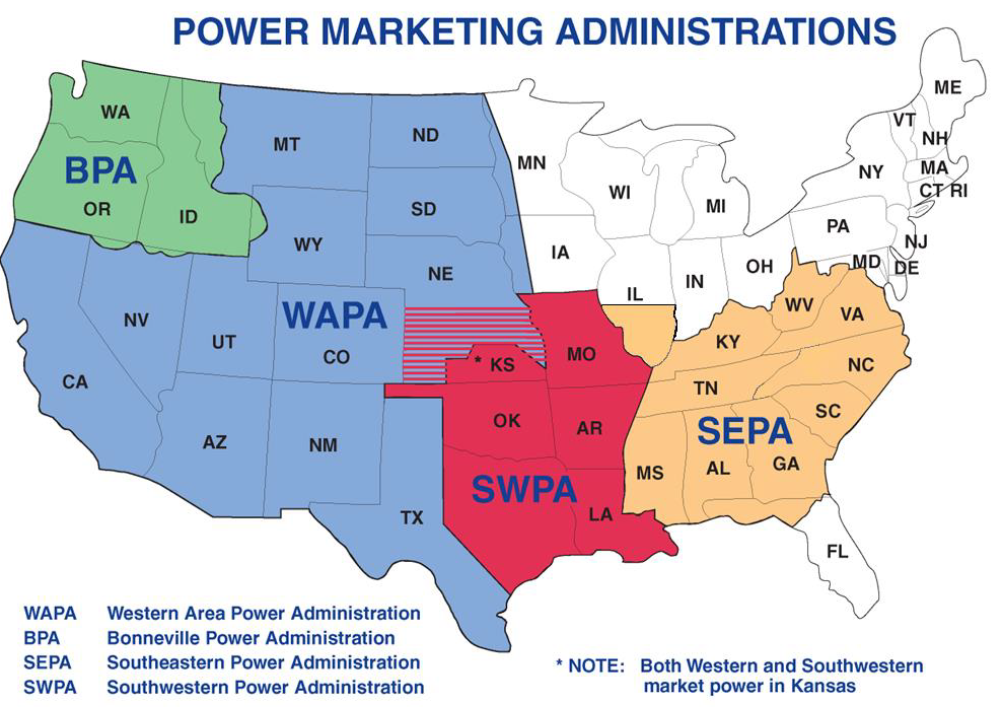
SEPA markets hydroelectric power generated by federal reservoirs located in 10 southeastern states at the lowest possible cost to public bodies, municipalities and electric cooperatives in Alabama, Florida, Georgia, Illinois, Kentucky, Mississippi, North Carolina, South Carolina, Tennessee, Virginia and West Virginia.
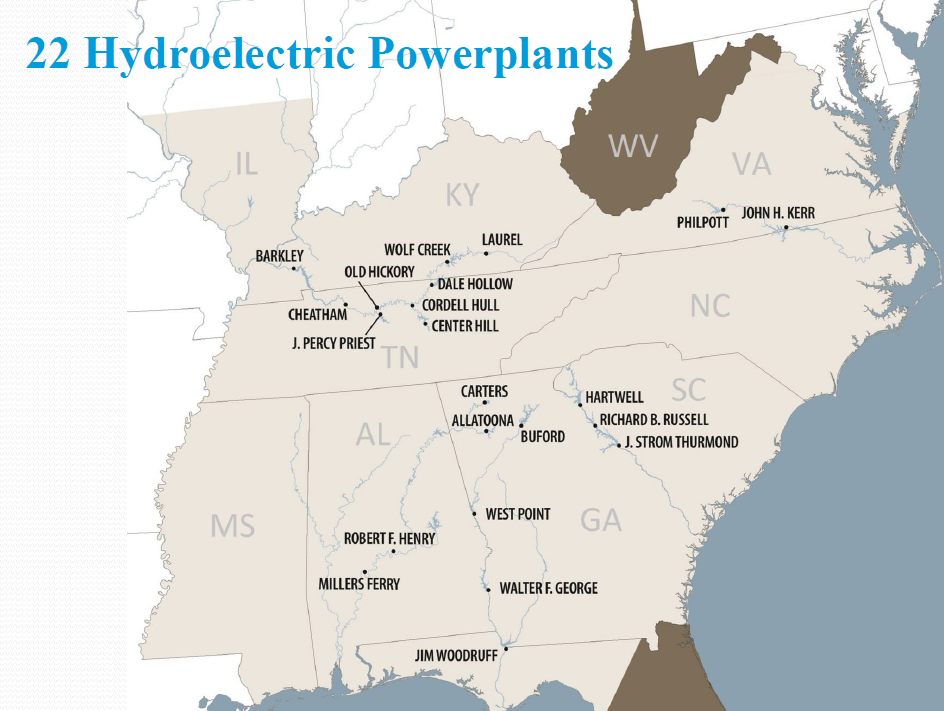
Its responsibilities include negotiating, preparing, executing, and administering contracts for the sale and delivery of electric power. It sets and justifies rate schedules that are necessary to repay the federal government’s investments and costs to produce and transmit energy.
The organization also performs balancing authority functions, serves as a water management interface, and schedules hydropower generation to meet customer peak load schedules. Unlike other PMAs, SEPA does not own transmission lines, so it contracts with neighboring utilities to provide transmission services for the delivery of power.
For more information on SEPA, visit www.energy.gov/sepa/southeastern-power-administration.
To watch a video on the federal hydropower program, click here.
Quick Links:
Meetings & Events
Other Resources
Current is published by MEAG Power
1470 Riveredge Parkway, N.W., Atlanta, Georgia 30328 | www.meagpower.org | (800) 333-MEAG
Pineview Solar Project Breaks Ground

MEAG Power, Participant & Public Power News
Winter 2024
Pineview Solar Project Breaks Ground
This marks the start of construction on MEAG Power’s first solar generation project.
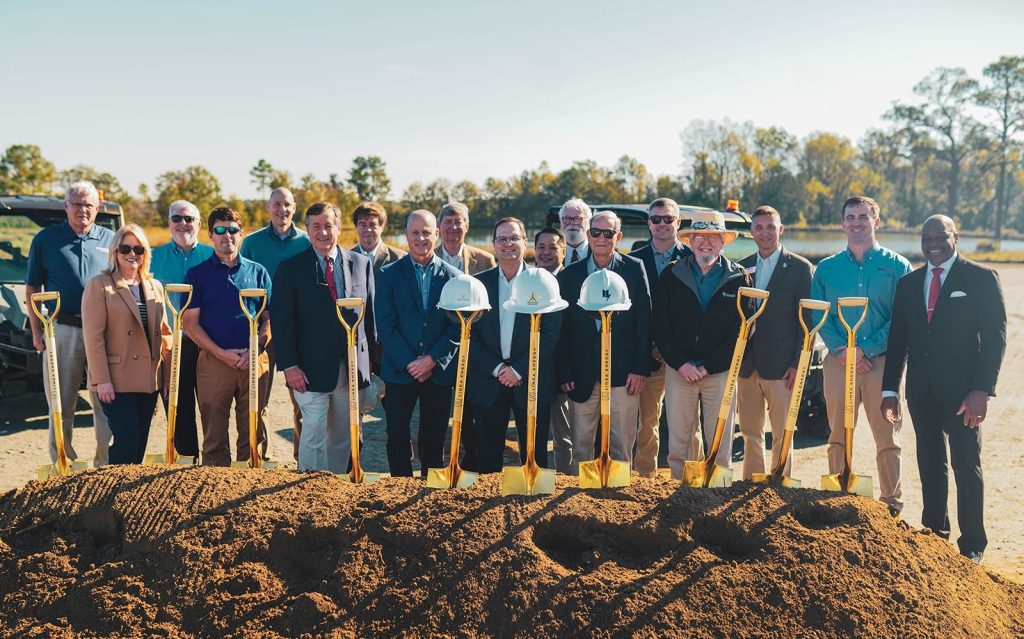
On Nov. 12, 2024, MEAG Power and several Participant communities participated in a groundbreaking ceremony for the Pineview Solar LCC (“Pineview”) farm, a utility-scale solar energy facility in Wilcox County, Ga. Construction is underway and the commercial operation date is expected by early 2026.
The addition of solar will further diversify MEAG Power’s resource mix, enhance reliability and provide affordable, clean energy to involved Participants. Twenty-two MEAG Power Participant communities will receive a total of 80 MW of generation from the solar park as part of a 15-year power purchase agreement (PPA) MEAG Power has with Pineview. The support of these Participants has been a key factor in bringing this solar project to fruition.

These communities include Albany, Blakely, Buford, Cairo, Calhoun, Camilla, Cartersville, College Park, Covington, Crisp County, Douglas, East Point, Forsyth, Griffin, LaGrange, Marietta, Monroe, Moultrie, Newnan, Palmetto, Thomasville, and Oxford.
The Pineview facility is owned by Linea Energy, a developer and operator of sustainable energy solutions, and will be constructed by Discovery Industries. It utilizes innovative technologies, including bifacial solar panels and racking equipment that tracks the sun. Bifacial panels capture sunlight on both sides of the panel, taking advantage of light reflecting off the ground, while the racking systems adjusts their tilt so that they follow the sun throughout the day, maximizing their energy production.
Incremental generation projects like Pineview will help Participant communities improve their economics, spread risk, enhance affordability and strengthen their competitiveness.
Quick Links:
Meetings & Events
Other Resources
Current is published by MEAG Power
1470 Riveredge Parkway, N.W., Atlanta, Georgia 30328 | www.meagpower.org | (800) 333-MEAG
2024 Mayors Summit Event Page

November 8-10, 2024
Welcome to the 30th Annual MEAG Power Mayor’s Summit!
This is a unique forum that enables Mayors of Participant communities and other city leaders to meet and discuss shared issues and concerns. Each year, there are great insights that result from these discussions.
This year’s agenda includes a mix of guest speakers and political analysis, MEAG Power business and operations updates, and – most importantly – time for Participants to share learnings among one another. To that end, if you are unable to attend, please ensure that you designate a Board/Commission Chair or another person to represent your community.
We look forward to seeing you!
LOCATION:
Chateau Elan Winery & Resort
100 Rue Charlemagne Drive, Braselton, GA 30517
ATTIRE:
Meetings: Business Casual / Evening Activities: Dressy Casual
ON-SITE AMENITIES:
Chateau Elan provides these amenities as part of each room reservation:
- Resort pool access with poolside fire pit lounging
- Daily winery tour
- Recreational club access (tennis, basketball and volleyball courts)
- Driving range access (one complimentary range token; call Pro Shop for availability)
- Tennis court access (call Pro Shop to reserve court time)
- Resort bicycles (available 9:00am-5:00pm)
- Resort shuttle service to winery, spa and golf courses
- Fitness center access
- Wireless internet and unlimited local calls
- In-room coffee
Note: Self parking is complimentary. Valet parking is $40/per day.
Event Materials:
Other Links:
Post-Event:
MEAG Power
1470 Riveredge Parkway, N.W., Atlanta, Georgia 30328 | www.meagpower.org | (800) 333-MEAG
Summer 2024
Energy Emergency Alerts

MEAG Power, Participant & Public Power News
Summer 2024
Energy Emergency Alerts - What You Need to Know
Higher year-round energy demand brings increased risks of EEA conditions in both summer and winter.
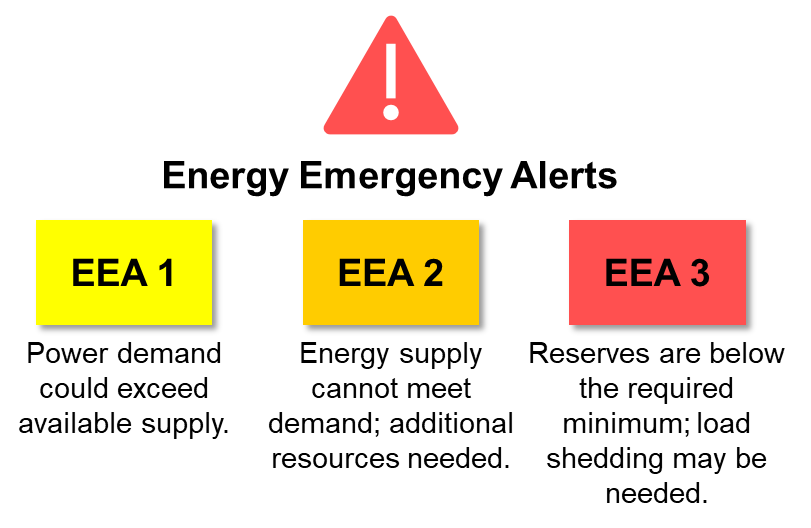
In September 2023, the effects of an El Niño swept across the southern U.S., raising temperatures in a region already in the grips of a relentless heat wave. In Texas, high electricity demand and critically low reserve margins led to a level 2 Energy Emergency Alert (EEA). The available energy supply couldn’t meet the elevated demand, and additional resources were needed to support the grid.
Four months later, in January 2024, a winter storm in Texas sent temperatures plunging and energy demand skyrocketing to an all-time winter peak record. The state’s power generation and load started to become unbalanced, prompting local officials to ask citizens to conserve electricity use.
While conditions in Georgia didn’t get as severe, MEAG Power set an all-time peak each of the last two summers, and the Reliability Coordinator for the Southern Balancing Authority (that MEAG Power belongs to) issued an EEA level 1 in January when an arctic air mass blew through.
The growth of energy-intensive data facilities and launch of many economic development projects in Georgia are adding increasing, year-round demand on the electrical system. It’s important for Participants to know that strains on the power grid can occur in any season, and that potential impact from severe weather isn’t just a summer phenomenon anymore.
As such, spring and fall are good times to review plans for significant energy events. That includes a quick primer on EEAs, which are issued to prompt steps to maintain grid reliability when available supply and operating reserves are in danger of not meeting demand.
Conservative System Operation Advisories – Watches or Warnings, based on the severity of the conditions impacting the grid in question, usually precede the EEA alert levels. They are an advanced warning that there are known conditions (i.e., storms, hurricanes, extreme temperature changes, potential generation deficiencies) that call for non-essential maintenance to be discontinued and for the system to be on heightened alert.
Think of an EEA level 1 alert as a thunderstorm watch, where conditions exist in which power demand could potentially exceed supply – all available generation resources are in use. EEA level 2 is a step up where emergency energy is needed and citizens may be asked to conserve electricity – load management procedures are in effect. The highest level, EEA 3, occurs when operating reserves go below the required minimums and Firm Load interruption is imminent or in progress. If the need for load shedding continues over a longer period of time, electric utilities may enter into rolling blackouts to share the outages across a number of their customers. While used as a last resort, these temporary, controlled interruptions of power supply help maintain grid integrity and prevent more severe or prolonged outages.
While Georgia hasn’t had to worry much about EEA events in the past, Participants should be aware of the increased risks. If an EEA is ever issued in Georgia, be prepared to communicate with local communities on how to reduce energy use, such as limiting use of EV chargers, washers and dryers, dishwashers, hair dryers, gaming desktops and other large appliances.
Helpful guides to communicating conservation tips to local communities in both summer and winter are available on the MEAG Power website. The APPA also has ready-made resources available to share on its Promoting Public Power webpage. Participants are also encouraged to keep track of up-to-date energy data via the Participant Pages including power loads, current and historical peaks, unit status and market pricing.
Rest assured, MEAG Power continuously plans for such risk scenarios. The most recent update to the Integrated Resource Plan (IRP) includes recommendations to keep Plant Scherer in the portfolio and add solar and battery to the mix, as these resources can supply much needed energy during extreme weather events and other high-demand situations. The IRP also evaluates backup resources for solar energy, such as adding battery storage, to ensure the reliability of the system.
Quick Links:
Meetings & Events
Other Resources
Current is published by MEAG Power
1470 Riveredge Parkway, N.W., Atlanta, Georgia 30328 | www.meagpower.org | (800) 333-MEAG
Insights From The 2024 Annual Meeting

MEAG Power, Participant & Public Power News
Summer 2024
Insights From The 2024 Annual Meeting
The MEAG Power Annual Meeting brings together Participants and a cross-section of legislators, public power experts and business partners to share valuable insights.
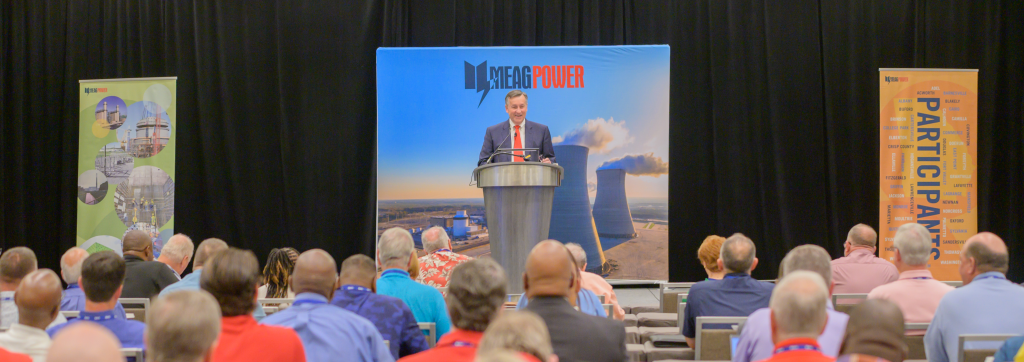
The 2024 MEAG Power Annual Meeting once again brought together Participants and a cross-section of legislators, public power experts and business partners to share valuable insights and build relationships. The gathering came at a unique time as a rise in AI-driven data centers, new manufacturing facilities and the electrification of transportation are driving predictions of a surge in energy demand in Georgia and elsewhere.
MEAG Power President and CEO Jim Fuller kicked off the General Session noting that we’ve reached a tipping point where we soon need to make some critical decisions. The rise in large loads has providers around the country looking to add new capacity, including Georgia Power and Oglethorpe Power, which have announced plans for new generation.
Given current industry trends, we have two choices in front of us. Continue with the status quo, which would only require incremental investment but could see city utilities lose ground competitively to other providers. Or, join together to explore additional sources of energy that could help win more competitive loads, which in turn would reduce average cost, increase margin, spread risk and enhance affordability.
Lakin Garth of the Smart Electric Power Alliance (SEPA) gave some eye-opening insights into the potential growth of data centers. He noted that data centers were predicted to grow from 4% of total U.S. electricity consumption in 2023, to 9.1% by 2030.
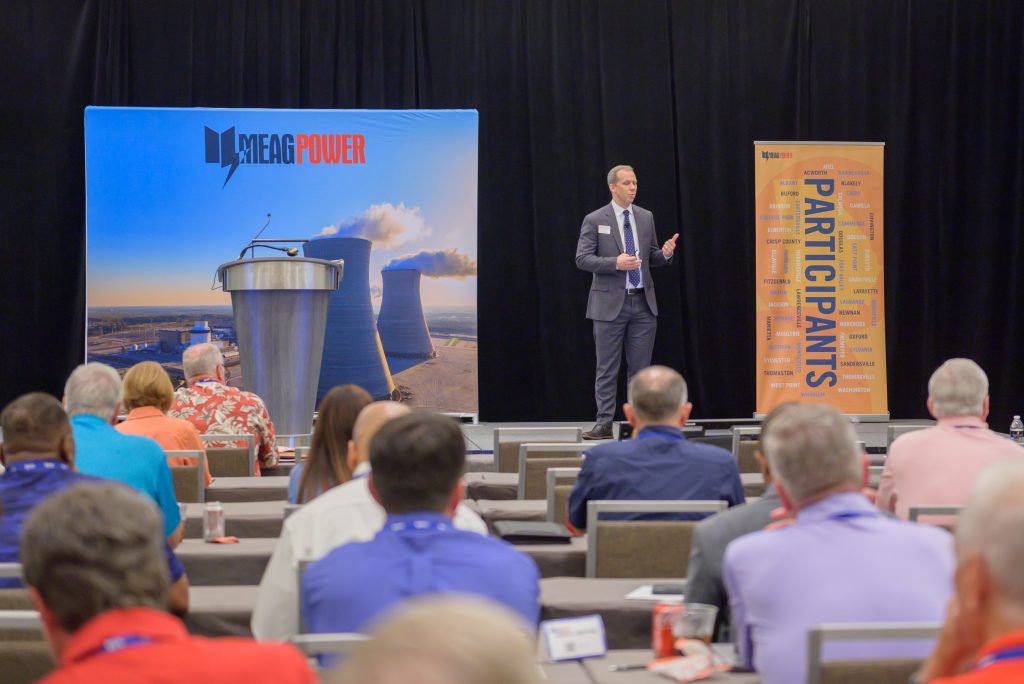
As of July 2024, Georgia had 127 data center facilities across 47 providers that encompass 10.8 million square feet and use approximately 1,500 MW of power. That ranks Georgia 6th in the U.S. in terms of data center load by state. And there are many more projects in the pipeline.
David Wasserman of the Cook Political Report gave an entertaining and informative perspective on the rapidly changing Presidential election. He also shared current polling in key House and Senate races, and how the potential outcomes could impact power sharing in Washington D.C.
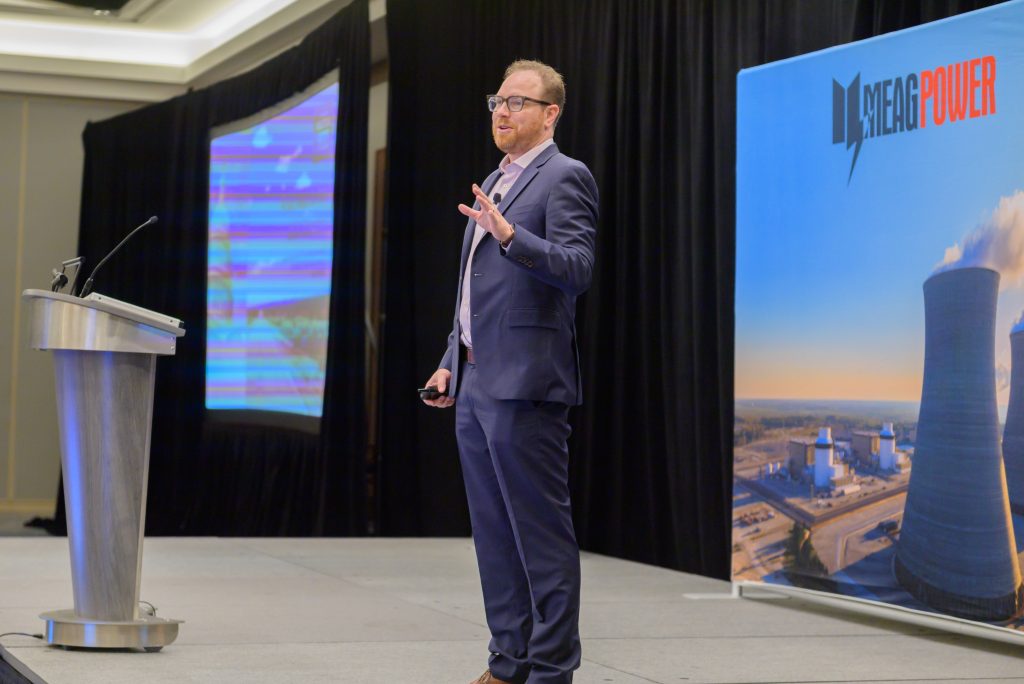
Navigating the environment in Washington D.C. also was a topic of Susan Eisenhower’s speech. Recalling how her grandfather, former President Dwight Eisenhower, had organized and galvanized support around the country’s development of nuclear power, she said her visit to the MEAG Power conference had reenergized her outlook as she saw how Participants came together to bring the Plant Vogtle expansion to a successful conclusion.
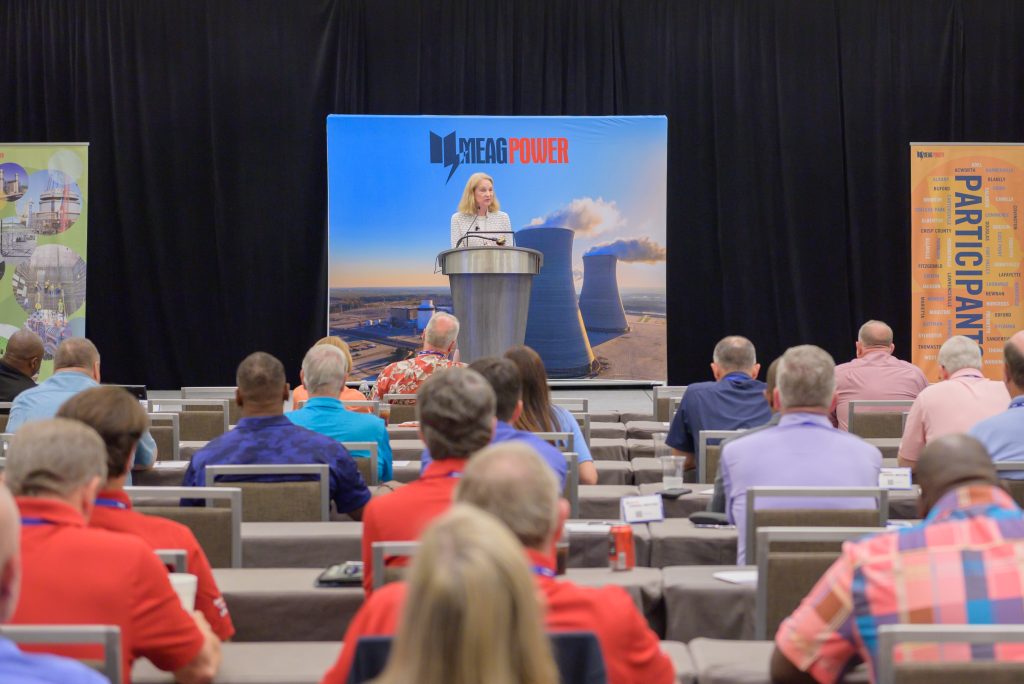
Jason Shaw, Chairman of the Georgia Public Service Commission, provided his perspective regarding current and future energy needs in Georgia, and what the Commission is doing to ensure that consumers receive safe, reliable and reasonably priced electric services.
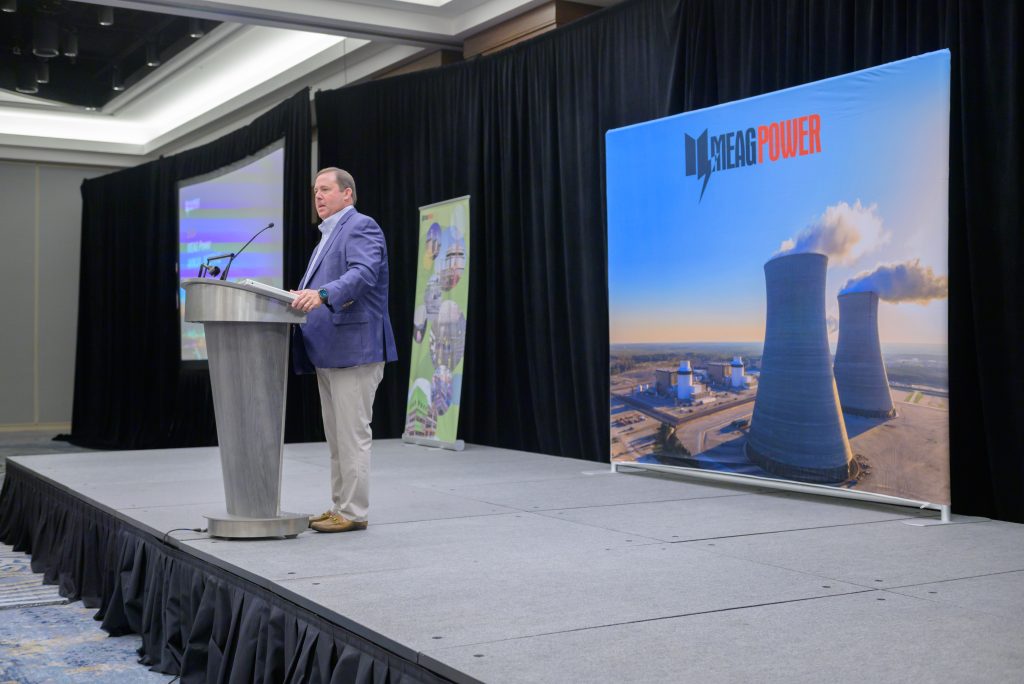
Mike Steffes, the CEO of ACES, MEAG Power’s new energy trading partner, gave an overview of his company. His colleagues, Andy Whitesitt and Alex Huff, also led a Concurrent Session on current power market trends, including an update on the natural gas, coal and renewables market, and what we can reasonably expect in the future given uncertain load forecasts.
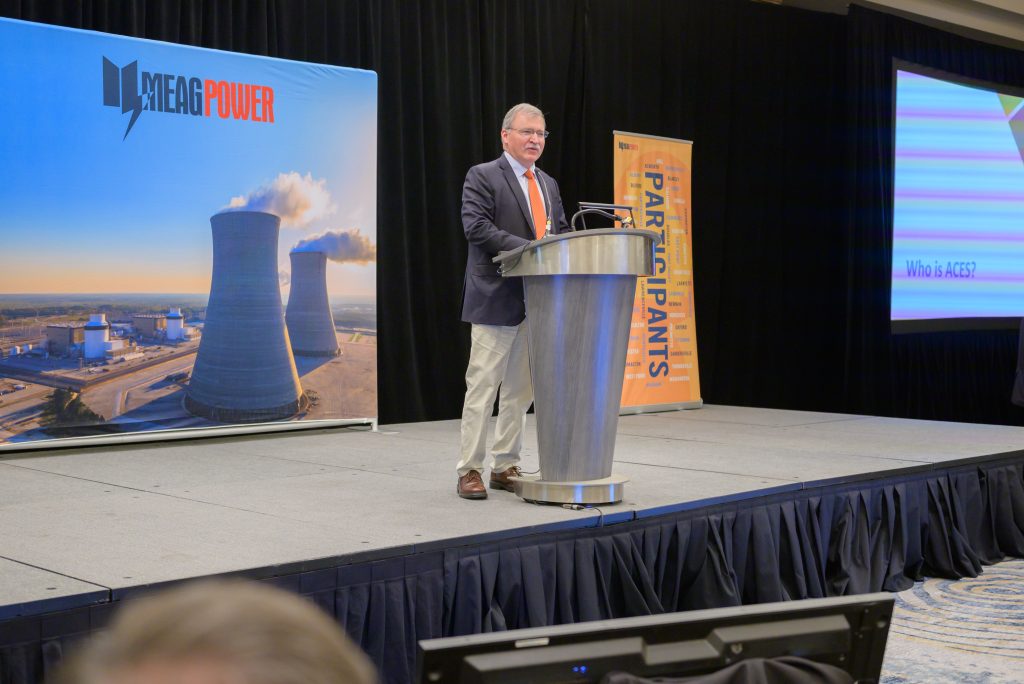
Another Concurrent Session focused on financial trends in the public power sector with a panel discussion moderated by MEAG Power’s CFO, Reiko Kerr. Panelists included Mike Mace, Senior Director at PFM, and Dan Aschenbach, Principal Consulting Partner at AGVP Advisory. The third Concurrent Session featured an analysis of EV trends and rates led by ECG’s President and CEO, Walter West, and Chau Nguyen, Director of Analytical Services.
During the Annual Meeting, Participant voting delegates re-elected Bill Yearta, State Representative from Sylvester, Steve Tumlin, Mayor of Marietta, and Terrell Jacobs, GMA Municipal Operations Consultant to three-year terms on the MEAG Power Board.
The Annual Meeting closed with a nod to next year’s gathering, which will mark MEAG Power’s 5oth anniversary as an organization. It promises to be a special occasion, so mark the dates: July 14-16, 2025.
Quick Links:
Meetings & Events
Other Resources
Current is published by MEAG Power
1470 Riveredge Parkway, N.W., Atlanta, Georgia 30328 | www.meagpower.org | (800) 333-MEAG
Tipping Point

MEAG Power, Participant & Public Power News
Summer 2024
To Build or Not to Build? We’ve Reached a Tipping Point
Market and regulatory trends are pushing us to a tipping point where, together, the Participants and MEAG Power staff need to make some critical decisions on future resource supplies.
MEAG Power President and CEO Jim Fuller set the context for discussions at the recent 2024 Annual Meeting by noting that market and regulatory trends are pushing us to a tipping point where, together, the Participants and staff need to make some critical decisions on future resource supplies.
We’re coming off the commercial operation of Vogtle Unit 4, completing the biggest endeavor MEAG Power has ever undertaken. Units 3 and 4 have added 500 MW of clean, reliable energy to the portfolio. Yet that may be just a drop in the bucket compared to the potential load increase being forecast in Georgia and elsewhere over the next few years.
As Lakin Garth of the Smart Electric Power Alliance (SEPA) noted in his presentation, data centers were estimated to account for 4% of total U.S. electricity consumption in 2023, and are expected to grow to a potential 9.1% by 2030. ACES, MEAG Power’s new energy trading partner, supported this forecast in its Concurrent Session by citing estimates that data center load is expected to double over next five years.
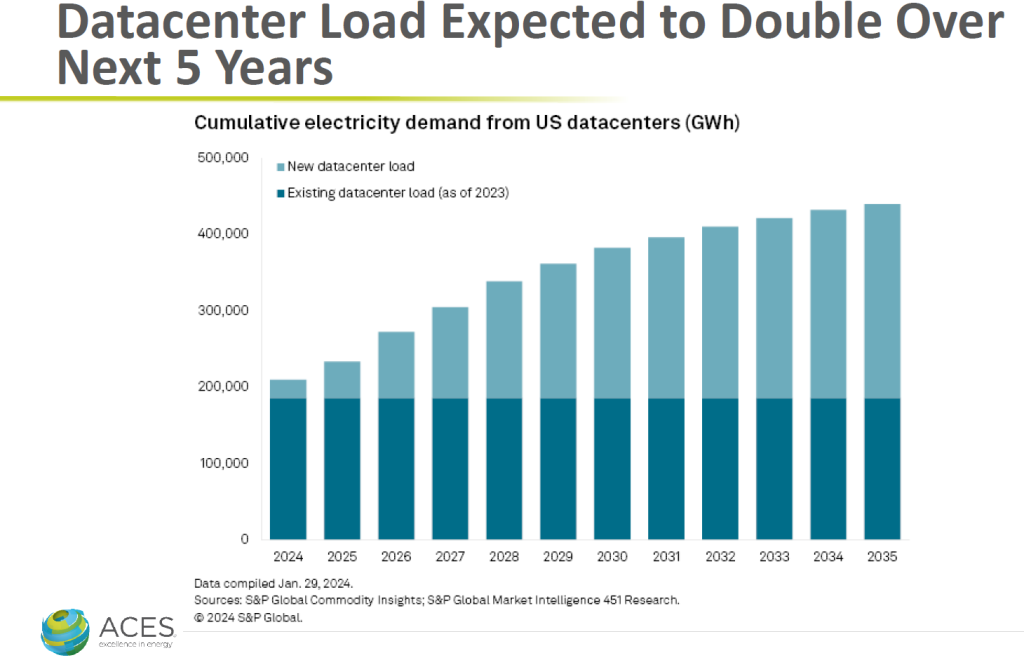
That’s on top of growth in manufacturing and the increasing electrification of transportation, which also will drive increased energy demand in our communities.
In response, many energy providers across the country are making plans for new power plant construction to boost supplies. Georgia Power received approval to build 1,400 MW of new generation based on its revised demand forecast, which increased 16-fold from just two years ago. Oglethorpe Power also announced plans recently to build new gas generation totaling 1,440 MW at a cost of $2.3 billion.
In addition to higher load growth, we could be facing the early retirement of Plant Scherer, depending on the fate of recent EPA rules on greenhouse gas emissions. That’s 490 MW that would need to be replaced at a time of increasing demand.
MEAG Power’s mandate as a public power joint action agency is to provide reliable, affordable power, and make available resources that will meet future demand of our Participant communities. That becomes increasingly difficult if demand grows and the supply of power diminishes.
That leaves two options. One, keep the status quo of supplying the communities’ inherent growth. That would require only incremental investment, but it also could reduce competitiveness as other energy providers become better positioned to take on large loads.
Two, we can join together to explore additional sources of energy that can serve these bigger loads. A new project would spread risk and enable Participants to win these projects, which in turn would dilute the fixed costs and reduce the kilowatt hour rate, increase margin and enhance affordability.
To be most effective there would need to be support from a broad base of Participants who come together and agree on a feasible project model. In fact, MEAG Power requires buy-in from at least five Participants to move forward with any new project. The more Participants that join, the more we can spread risk and new revenues. No single community could build purpose-fit generation at the same affordable, low-risk option as a larger group.
And the benefits potentially are significant. There is a surge of interest at the moment among data center developers, e-mobility companies and others looking for communities that have reliable, clean and affordable energy.
EdgeConneX, a global data center company, recently paid $318.5 million for a strip of land in Union County. That’s about $5 million per acre. When hearing the price, many real estate professionals thought it was a clerical error.
EdgeConneX plans to build a $1.8 billion data center campus to serve Microsoft. The site will require the equivalent electricity to power a city of 700,000 people.
Investments like these don’t get made on a whim. The demand for power is certainly going to rise. It’s just a matter of by how much.
The loads are coming, and whether or not Participants can win their share depends on decisions this group will make over the coming months.
Attracting deals like EdgeConneX could provide substantial benefits for Participant communities. But it requires a commitment and investment now to secure enough power in the future.
New plants take time to build. At least four to five years for gas and solar construction, and more than 10 for nuclear. And that’s not counting design and development, regulatory approval, testing, and other requirements.
If we started today, we likely wouldn’t get the energy until 2029 or 2030 at the earliest.
That puts us on the clock to make some decisions.
When it comes to what type of new generation to build, MEAG Power is open to all sources. Our guiding principle is to maintain diversity and flexibility in our generation mix, so that we continually provide reliable, affordable power to your communities. To this end, we recently issued an RFP for a range of new generation sources to see what options are available and will support our needs.
As we move into the latter half of 2024, keep in mind that other providers are building generation and will be positioned to win more loads and drive down their costs. If we set up a new project in the right way, Participants could benefit from winning new loads large and small.
We look forward to having more conversations with you on these important issues.
Quick Links:
Meetings & Events
Other Resources
Current is published by MEAG Power
1470 Riveredge Parkway, N.W., Atlanta, Georgia 30328 | www.meagpower.org | (800) 333-MEAG